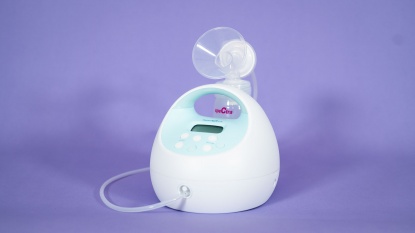We all know that breastfeeding is best and that breast milk has essential antibodies and nutrients to help the baby thrive. Unfortunately, many mothers and babies struggle when it comes to breastfeeding. There can be many complications or lack of confidence that interfere with a baby's learning how to feed. With delays in your milk coming in or the baby having difficulty latching, it isn't as easy as having the baby and showing him the boob. These potential problems are why you need to educate yourself about breastfeeding before the baby is born. This way, you will be able to handle any roadblocks you might encounter along the way, which can help normalize the experience for you. Arming yourself with knowledge ahead of time can help you succeed in feeding your baby. You can overcome almost any roadblock if you have the expertise and support to succeed.
If you plan to breastfeed or maybe aren't sure, we suggest you look into taking a breastfeeding or lactation class (most hospitals offer one). If you can't find a class, you should consider talking with a lactation specialist about what to expect. This advanced knowledge can give you the support you need to get the job done or make it feel less scary and more of a viable, easier option than bottle feeding.
Things to Remember
- Be patient with yourself and your baby. Sometimes it doesn't come right away.
- Request help in the hospital if you don't get it right away. Often, immediate assistance can get your baby and you on the right road.
- Familiarize yourself with a few of the standard holds that make feeding easier.
- Try to breastfeed as quickly as possible after birth. Your baby will want to feed and should be eager to figure it out. Tell the hospital staff your intention to breastfeed as soon as possible after the baby is born.
- Hold your baby's head with one hand and then lift your breast with the other. Try to push the entire areola and nipple into her mouth quickly at one time without getting your fingers trapped in her mouth. This pushing will help the baby get the proper latch; she needs to have a significant amount of the breast in her mouth to facilitate the flow of milk and give her something to suck on. If she gets only the nipple, no milk will come out, the baby will get frustrated, and your nipples will hurt like the dickens.
- Check baby's latch by looking for outward placed lips; if the lips are tucked in, or you can see baby's gums, then the latch is probably not right. If you can see your areola, chances are your baby is not latched on correctly. The latch is likely good if you can hear a low-pitched sucking sound or see your baby making a swallowing motion.
- If your baby's latch hurts, then you should readjust the latch and start over. While breastfeeding can feel strange, it shouldn't be painful. If there is burning or sharp shooting pains, you should tell your doctor as you might be experiencing mastitis and infection of the milk ducts, which are treatable.
- The best advice is to relax, no, really relax. You got this! Baby has this! If you are committed, you will be able to accomplish productive breastfeeding, but the road isn't always easy, and there could be bumps along the way. So relax, breathe, and try again if it isn't working.
Reference Sources
- Mayo Clinic - Breast-feeding tips: What new moms need to know
- La Leche League International - Breastfeeding Basics





